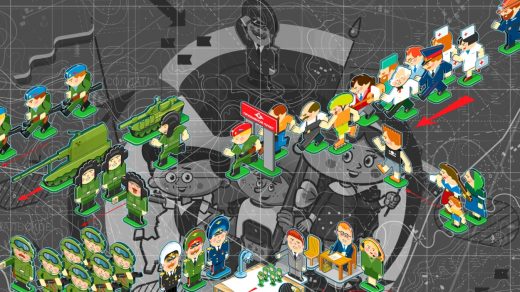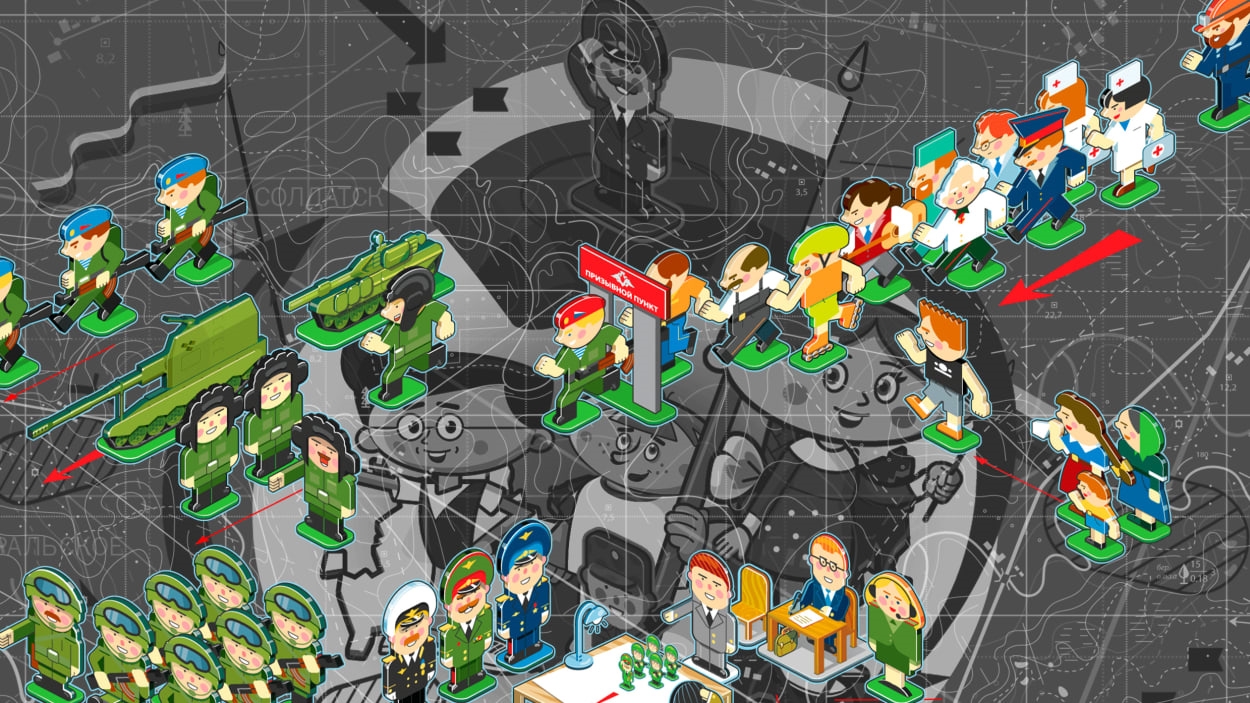Inside Russia’s cartoonish propaganda website made for kids
It has been almost six months since the world watched in horror as Russia invaded Ukraine, under the false pretext of protecting Russia from potential aggression. But Russia’s very own presidential website may have been laying the groundwork for years.
Aptly named kids.kremlin.ru, the website is a frightening example of internet propaganda designed to indoctrinate children. Dripping with cartoonish illustrations, gamification, and nationalist information about the country’s constitution—or about who protects the citizens’ rights “when the president is sleeping“—it is seemingly designed to prep children for war from their earliest days.
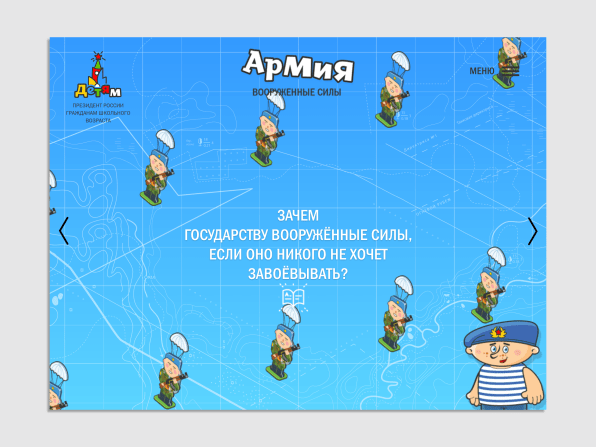
“The Russian government is attempting to meet children where they are, and speak to them in their own language,” says Samuel C. Woolley, a journalism professor at the University of Texas at Austin, who focuses on propaganda and the use of the internet to mitigate public opinion.
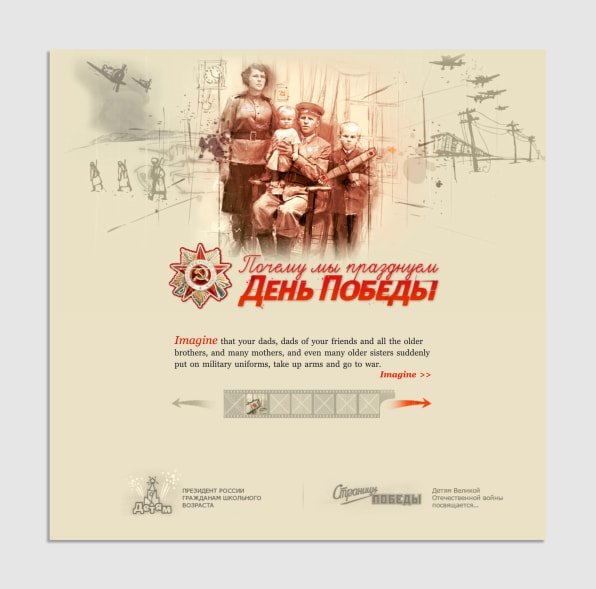
The website is split into several self-aggrandizing sections, including a sensationalized crash course on WWII that unfolds like a story on a film roll. “For four years our country lived a harsh and terrible military life,” one of the chapters reads when I toggle Google Translate. “Imagine that strangers, armed to the teeth, speaking an incomprehensible language, impudent soldiers suddenly burst into your city or your village, enter your house, do what they want, and there is no one to protect you,” says another.
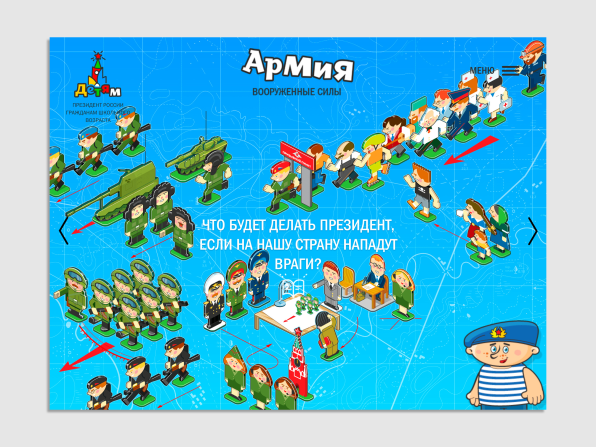
In one painfully ironic spot on the site, the government focuses its attention on the consequences of war on Russia. Spanning eight pages, the so-called Army segment relies on fearmongering and blatant misinformation to indoctrinate kids. One page even seeks to justify the need for armed forces within a country that claims to have no intentions of conquering anyone. Animated by an army of soldier pawns parachuting down across the screen, “The state must be strong and armed,” it reads. “Otherwise, it may itself be conquered by some other countries, and then it will lose its independence and sovereignty and will not be able to protect us.”
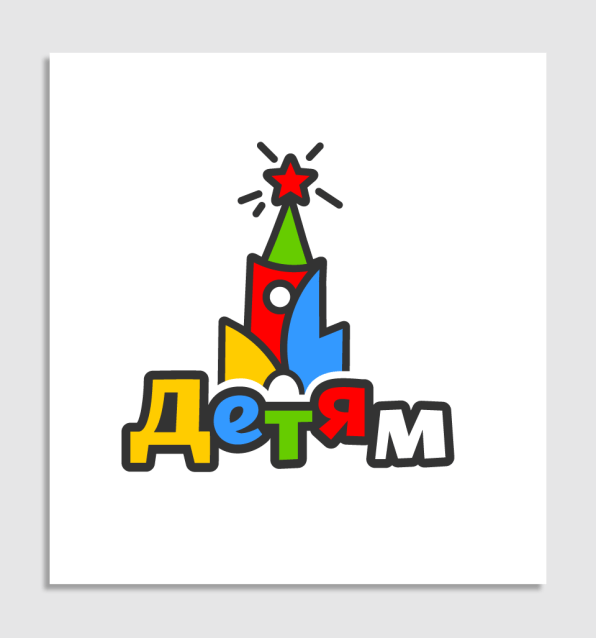
This messaging is packaged to look like a board game with action figures and animations. Its logo consists of a castle painted in primary colors, and even the loading bar resembles colorful candy. It almost feels like a video game at times, as evidenced by the character you choose on the homepage to “guide” you through the site. “It looks a bit like Minecraft; it’s meant to be a game for kids,” says Woolley.
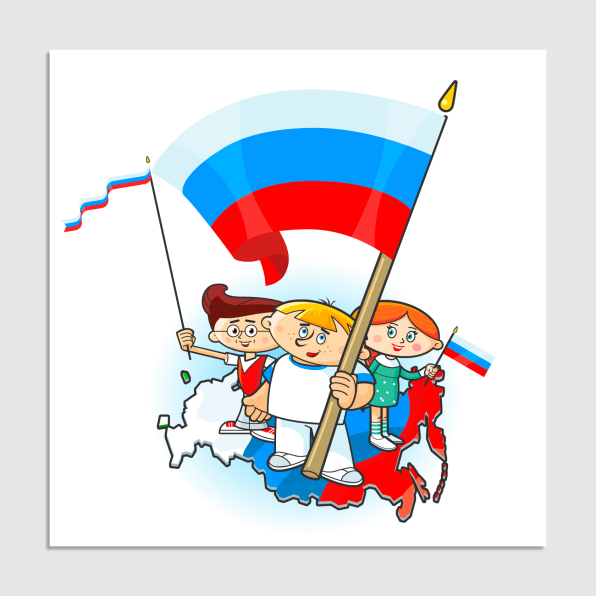
Judging from the Wayback Machine, the website has been live since at least 2009, but the first mention of the Army segment dates back to 2018. For Woolley, the timing isn’t coincidental: He points out that by 2018, Russia had built up a large military presence in Crimea and was facing international pressure to withdraw.
“Russian citizens were being exposed to a great deal of anti-Russian sentiment online, despite the Kremlin’s attempts to control access to foreign information and news,” says Woolley. Perhaps the government added the section to legitimize Russia’s military aggression and convince children that the occupation of Crimea—and now Ukraine—is valid.
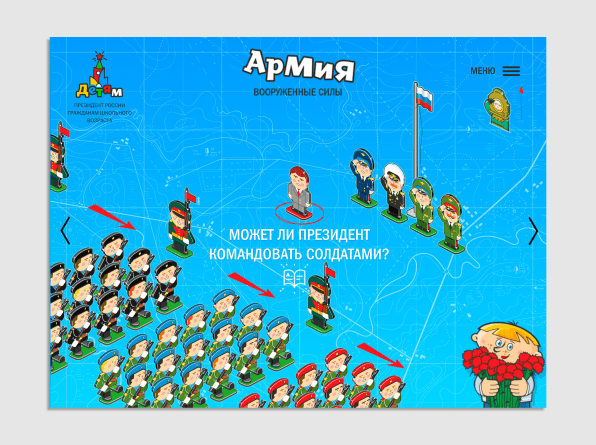
Russia (and before that, the Soviet Union) has a long history of swaying young people under the guise of education, cultivating them to be part of the country’s propaganda efforts—or as Woolley calls it, “part of the machine of Russia against the world.” These include youth army training camps, nationalist summer camps, and even “camps where [Russia] brings in kids to learn how to code or how to use social media in ways that are oriented toward manipulating public opinion and spreading their own form of propaganda,” adds Woolley.
Ultimately, these efforts are all about standing by and preparing young Russians to fight, whether that is in the traditional warfare sense, or through social media and spreading misinformation on the internet. The latter could have particularly terrible ramifications.
“If it’s the government that’s spreading the propaganda directly, that gets caught by Facebook, Twitter, or YouTube very quickly,” says Woolley. “But if it’s kids who are spreading governmental content on their own, then that’s much more potent, and much more difficult to delete because it might be considered to be free speech.”
(55)

